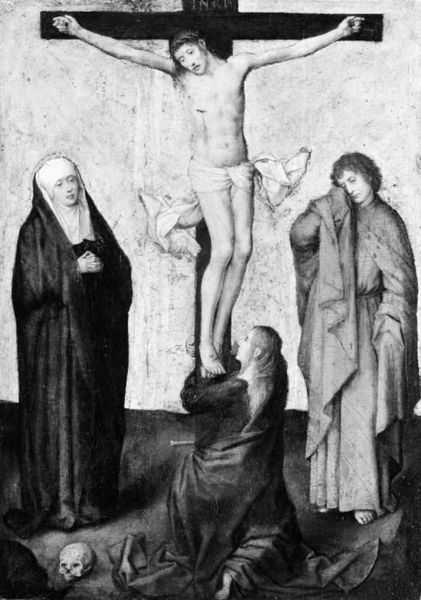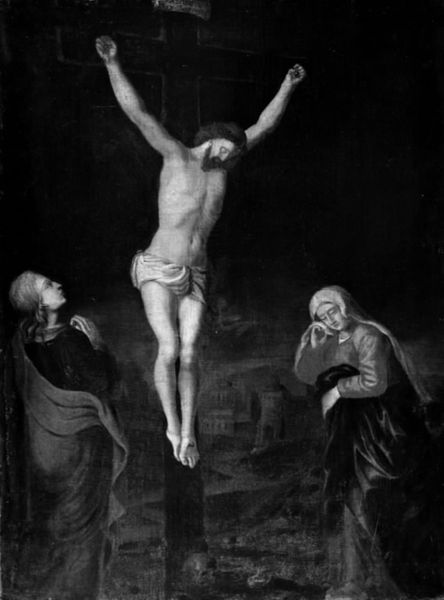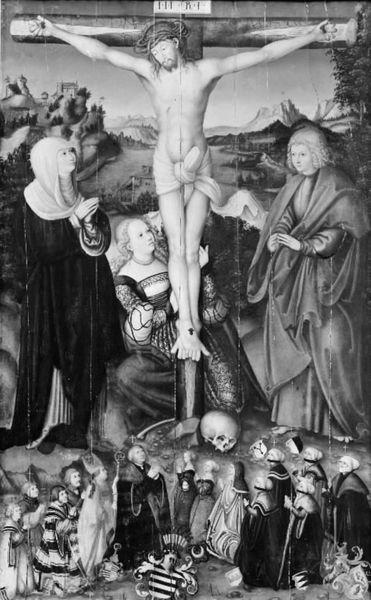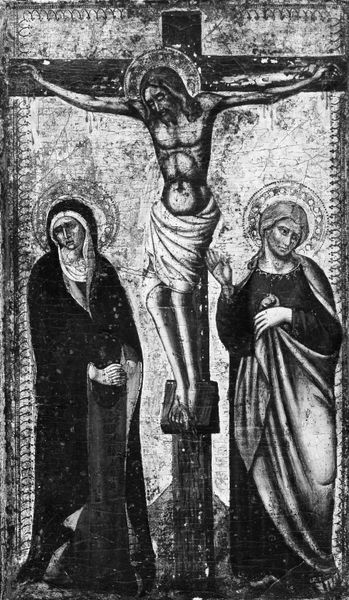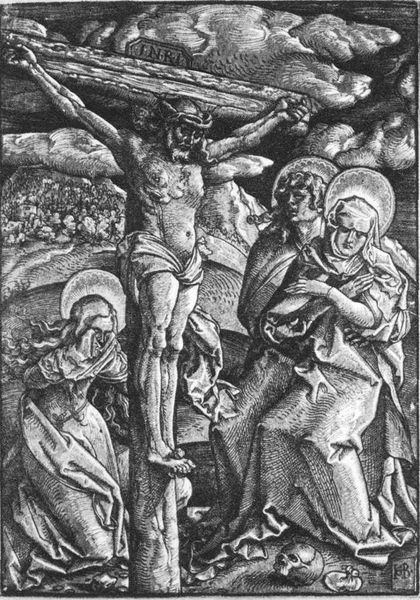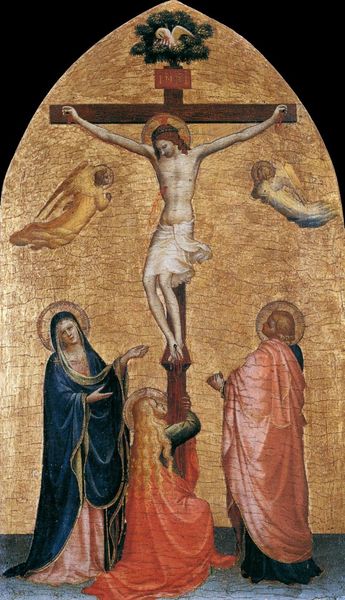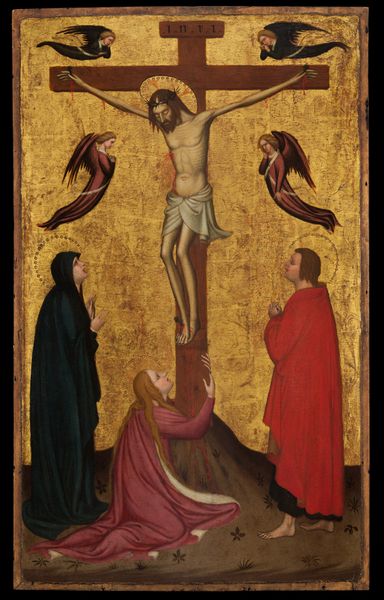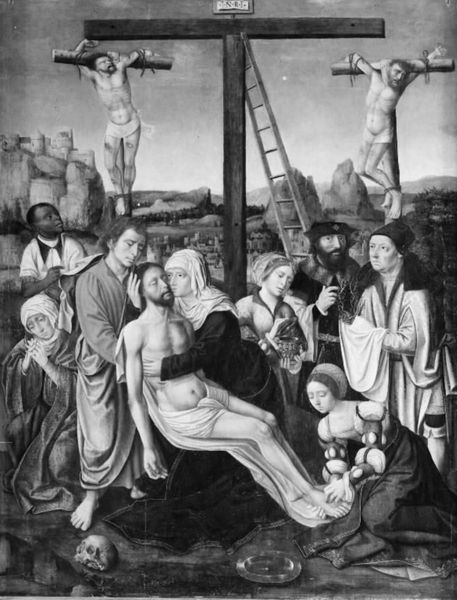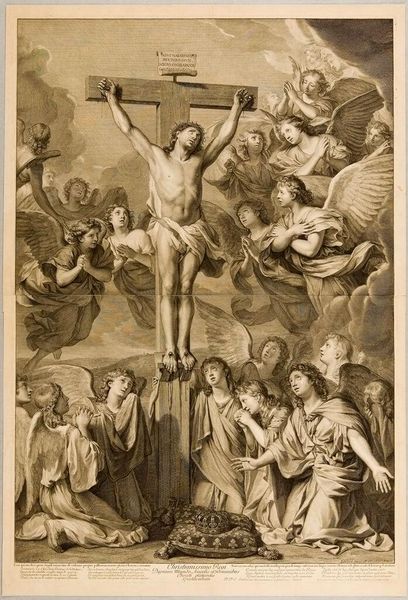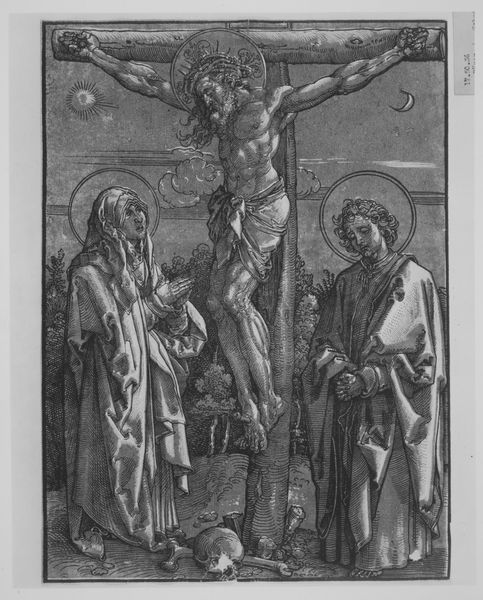
The Crucifixion, (reverse) Saint Francis of Assisi; The Resurrection, (reverse) An Abbot Saint, Possibly Saint Benedict 1455 - 1465
0:00
0:00
tempera, painting
#
portrait
#
medieval
#
narrative-art
#
tempera
#
painting
#
sculpture
#
figuration
#
black and white
#
crucifixion
#
history-painting
#
italian-renaissance
#
christ
Dimensions: Each 19 1/2 x 8 3/4 in. (49.5 x 22.2 cm)
Copyright: Public Domain
Editor: Here we have an altarpiece panel attributed to an anonymous artist from the mid-15th century, around 1455-1465. It's tempera on wood, depicting the Crucifixion on one side and saints on the reverse. I'm immediately struck by its somber mood and the very direct depiction of suffering. How do you interpret this work within the broader scope of art history? Curator: It's a potent image, isn't it? Viewing it through a historical lens, the stark presentation of Christ’s suffering speaks volumes about the function of art during this period. These panels weren't just devotional objects; they were carefully crafted to incite specific emotional responses in viewers. Consider how the display and veneration of such altarpieces within a church context would shape the public's understanding of faith and authority. Editor: That’s interesting. So, beyond the religious aspect, this work also had a societal role? Curator: Precisely. Art wasn’t just created in a vacuum. Patrons, religious institutions, and even the physical placement of the work dictated its meaning and impact. The choice of tempera, the stylized figures – everything contributes to a deliberate message meant to reinforce the Church’s teachings and sway public sentiment. Do you think the emotional impact differs for a contemporary audience viewing this in a museum versus its original intended audience? Editor: Definitely. I think that context is everything and changes our understanding of what it is the artist wanted to convey. Being in a gallery setting makes you consider the intention differently from when it's presented as a tool for faith. Curator: Absolutely. Understanding that dynamic helps us unravel the complexities of medieval art. The shift in venue changes the relationship with art. Editor: This makes me look at all medieval art with fresh eyes now. I'm no longer viewing them solely for their artistic or aesthetic value but also understanding their role in society and political power during the time. Thanks for sharing your perspective! Curator: My pleasure! Seeing art as an integral part of its historical fabric is truly enlightening.
Comments
No comments
Be the first to comment and join the conversation on the ultimate creative platform.
